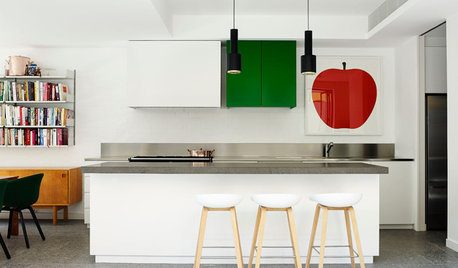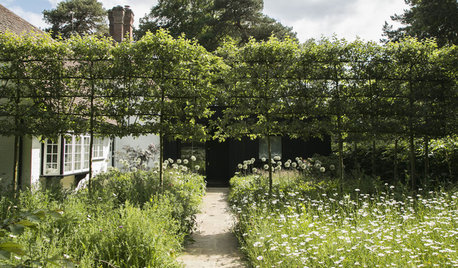Apples
brandon7 TN_zone7
16 years ago
Related Stories

EDIBLE GARDENSHow to Add an Apple Tree to Your Edible Garden
Readily available, beautiful and fragrant, apple trees offer four-season interest along with crisp, juicy fruit
Full Story
HOME TECHThanks, Steve: Apple-Inspired Design at Home
See how the Mac and iPod aesthetic synchs up with today's house
Full Story
DECORATING GUIDESCrisp, Fresh: Go for Green Apples
On the Walls or Au Natural, Green Apples Pack a Decorative Bite
Full Story
COLORApple Accents: Color from the Orchard Comes Home
Cheerful reds and crisp greens inspire everything from centerpieces to bedscapes
Full Story
SHOP HOUZZShop Houzz: How About Some Apples?
Brighten and define your space with juicy colors and graphic accents
Full Story0

VINTAGE STYLEFlea Market Find: Apple Crates
If life gives you apples, reuse the vintage crates they came in to decorate your home
Full Story
PRODUCT PICKSGuest Picks: An Apple a Day
20 products to help your iPad, iPhone and other Apple gadgets feel right at home
Full Story
GARDENING AND LANDSCAPINGCrab Apple Trees Set Off a Stylish English Courtyard
A structure of pleached crab apple trees, bordered by a wildflower meadow, links a minimalist addition to an old house in Buckinghamshire
Full Story
LIVING ROOMSRoom of the Day: A Family Living Space for Weekends in the Big Apple
A Long Island couple create a family-friendly and stylish New York City retreat where they can unwind and entertain
Full Story







sdrawkcab
brandon7 TN_zone7Original Author
Related Professionals
Edmond Landscape Architects & Landscape Designers · Mountain Brook Landscape Architects & Landscape Designers · Finneytown Landscape Architects & Landscape Designers · Gainesville Landscape Contractors · Broadlands Landscape Contractors · Emmaus Landscape Contractors · Gainesville Landscape Contractors · Kerman Landscape Contractors · Nutley Landscape Contractors · Overland Park Landscape Contractors · The Villages Landscape Contractors · Twin Falls Landscape Contractors · Rialto Solar Energy Systems · Richmond Solar Energy Systems · Voorhees Solar Energy Systemslucky_p
brandon7 TN_zone7Original Author
lucky_p
maternut
brandon7 TN_zone7Original Author
maternut
brandon7 TN_zone7Original Author
lucky_p
donna_in_tn